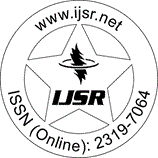Downloads: 9
India | Geosciences and Environment | Volume 14 Issue 3, March 2025 | Pages: 510 - 515
Uncovering Recent Tectonic Activity in Western Svalbard: A Reassessment of Fault Movements and Deformation Patterns
Abstract: The western Svalbard fold - and - thrust belt has a complex tectonic history, that culminated with the opening of the North Atlantic Ocean. The last recognised important tectonic event in this area is dated from the late Tertiary, when sediments of the Ny ?lesund tertiary basin have been overthrusted by older, carboniferous rocks. From this late Tertiary event onwards, the area of Ny ?lesund (western Svalbard) is supposed to have mainly been affected by post - glacial rebound processes. By contrast, there is to date little or no information available for recent tectonic deformations. This has led previous workers to neglect or ignore a possible role of recent active tectonics in western Svalbard. However, in more recent times, high heat flow anomalies and a sparse seismic activity have been recorded offshore western Svalbard, suggesting that this province and its adjacent onshore continuation could still be tectonically active domains. The Ny ?lesund is located in the Br?gger peninsula, which is affected by several faults and deformation zones of uncertain age that, in places, control the landscape. Thus it represents a unique opportunity to attempt testing a possible activity for these structures, some of which are exposed in a spectacular section just below the antenna. The resultant vector is vector is 14.84 mm/yr with a azimuth 27.670 N with a vertical displacement of 7.62 mm/yr, which is not due to the isostatic rebound. It includes the local deformation. The preliminary results of our investigation appear broadly consistent with the hypothesis of active, or at least very recent tectonic activity in western Svalbard. If confirmed by further work, this finding may yield relevant constraints to an enhanced understanding of the recent tectonic evolution of the arctic region.
Keywords: GPS, Crustal deformation, Ny ?lesund, isostatic rebound
How to Cite?: Laishram Sunil Singh, Arun Kumar, "Uncovering Recent Tectonic Activity in Western Svalbard: A Reassessment of Fault Movements and Deformation Patterns", Volume 14 Issue 3, March 2025, International Journal of Science and Research (IJSR), Pages: 510-515, https://www.ijsr.net/getabstract.php?paperid=MR25311120855, DOI: https://dx.doi.org/10.21275/MR25311120855
